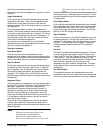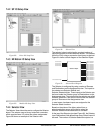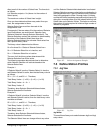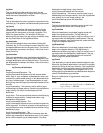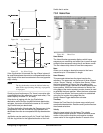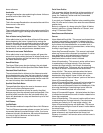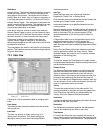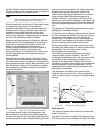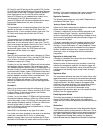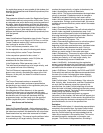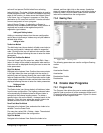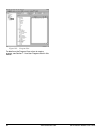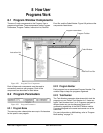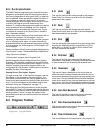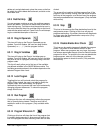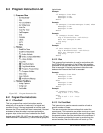
Configuring an Application www.emersonct.com 61
PLS has On and Off points just like a global PLS, but the
On and Off points are specified as an incremental distance
from the start of the index, instead of absolute positions.
Each index has its own On and Off points, and the
Index.#.PLSStatus is only updated when Index# is run.
The direction of the PLS does not matter, the
Index.#.PLSStatus will activate and deactivate the same
incremental distance from the start of the index.
PLS On Point
This parameter is an incremental distance from the start
position of the index, at which the PLS.#.Status will
become active. It is an unsigned value in user units. The
On Point must always be less than the Off Point.
PLS Off Point
This parameter is an incremental distance from the start
position of the index, at which the PLS.#.Status will
deactivate. It is an unsigned value in user units. The Off
Point must always be greater than the On Point. If the Off
Point is larger than the Distance parameter in an
Incremental type of index, the PLS Status will never
deactivate until the index is run again.
Example 1:
Index 0 is an Incremental index with a distance of 5 Revs.
The PLS On Point is set to 1 Rev, and the PLS Off Point is
set to 4 Revs. A home is completed, and Position
Feedback is equal to 0.0 Revs.
If Index 0 is run, the Index.0.PLSStatus will activate when
the feedback position reaches 1 Rev and remain active
until feedback position reaches 4 Revs, and deactivate. At
the end of Index 0, position feedback is equal to 5 Revs. If
we initiate Index 0 again, Index.0.PLSStatus will activate 1
Rev into the index, or at 6 Revs. It will remain active until
position feedback reaches 9 Revs, and deactivate. This
index could be run over and over again, and
Index.0.PLSStatus will activate 1 Rev from the starting
position and deactivate 4 Revs from the starting position
every time.
Example 2:
Index 1 is an Incremental index with a distance of -10 revs.
The PLS On Point is set to 4 Revs, and the PLS Off Point
is set to 6 Revs. A home is completed, and Position
Feedback is equal to 0.0 Revs.
If Index 1 is run, the Index.1.PLSStatus will activate when
the position feedback reaches -4 Revs (or 4 Revs from the
start of the index). Index.1.PLSStatus will then deactivate
when position feedback reaches -6 Revs (or 6 Revs from
the start of the index). If Index 1 is run again,
Index.1.PLSStatus will activate and deactivate at -14 Revs
and -16 Revs respectively.
Index PLS's can be used on any type of an index.
If an index is so short (possible in the case of an absolute
index) that it reaches the On Point, or incremental
distance, into the index, but never reaches the Off Point,
the Index.#.PLSStatus will remain active until the index is
run again.
Similarly, if the index is so short that it never reaches the
On Point, the Index.#.PLSStatus will never activate.
Registration Parameters
The following parameters are only used if Registration is
selected as the Index Type.
'Analog' or 'Sensor' Radio Buttons
Select one of these radio buttons to determine what signal
will be used as your registration trigger.
If 'Sensor' is selected, a source must be assigned to the
Index.#.SensorTrigger Typically a proximity sensor is
wired to a hardware input, and therefore a module or drive
input source is assigned to the Index.#.SensorTrigger, but
any source can be used.
If 'Analog' is selected, one of the analog signals must be
selected in the analog list box. Available selections are
Analog In, Torque Command, or Torque Feedback. Then a
comparison operator must be selected from the operator
list box. Available selections are > (greater than) and <
(less than). Last, an analog value must be entered for
comparison.
Registration to Analog Input Value
If Analog In is selected, the value of the drive Analog Input
is used as the registration signal.
When the value of the analog input reaches a value that
satisfies the comparison operator, the sensor trigger will
activate. Units for the registration value will match the units
configured on the Analog Inputs screen when Analog In
selected.
Registration Offset
The incremental distance the motor will travel after a valid
registration sensor or analog limit value has been detected.
This is a signed parameter; so if an index is travelling in the
negative direction, the offset needs to be negative and
continue in the same direction. If the registration offset is
zero or less than the decel distance shown on the
calculations tab, the motor will decelerate at the
programmed rate and then back up to the specified offset
distance from the trigger position.
Enable Registration Window
This check box enables (if checked) the Registration
Sensor Valid Window. When active, only registration
marks that occur inside the registration window are seen as
valid.
Window Start
This parameter defines the start of the Registration Sensor
Valid Window relative to start position of this index. This is
an unsigned value and is relative only to starting position of
this index. Index direction does not affect this parameter.
The Registration Window Start position (or distance)
should be less than the Registration Window End position.



